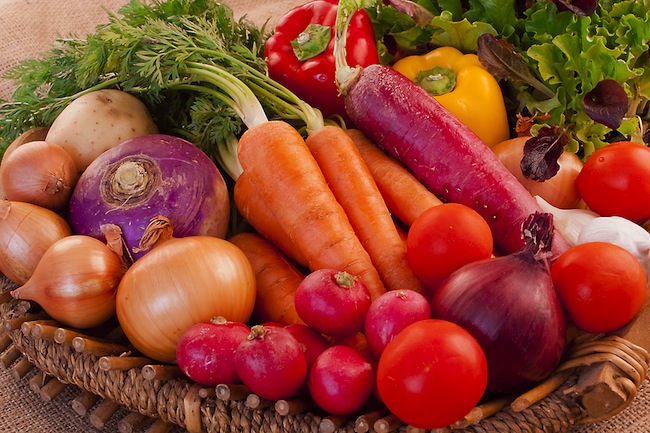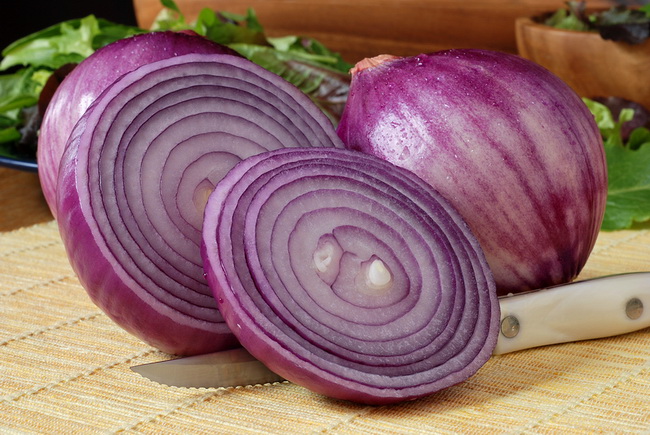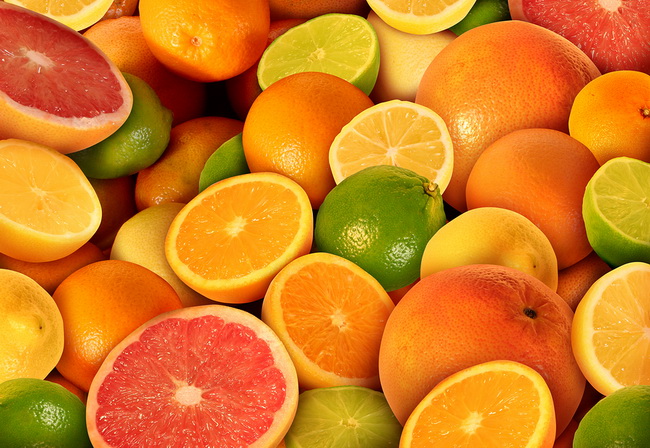- Make It Yourself Lavender Heart-Shaped Bath Bombs!
- 20 Things You Never Knew About “Down There”
- 12 Best Foods For Those Suffering From Arthritis Pain
- 12 Personal Hygiene Mistakes Almost Everyone Makes (Mom Never Told You About #4!)
- 15 Medicinal Plants And Herbs From The Cherokee People
- 12 Mind-Blowing Benefits Of Drinking Coconut Water During Pregnancy
- 12 Outstanding Winter Foods That Won’t Fatten You Up Like A Christmas Turkey
10 Nutrients You Can Only Get From Plants

Photo credit: bigstock.com
The difference between plant foods and animal foods is vast. Although some nutrients can be found in both, there are some that are only found in plants and others that are only found in animal foods. We are omnivores by nature, so it only makes sense that for optimal nutrition, we should follow a balanced diet that includes both plant and animal foods.
However, the recent popularity of the Paleo diet and the Atkins diet has led many people to think that they don’t really need plant protein or other plant nutrients. This is a mistake as there are many nutrients that we can only get from plants.
If you are following one of the popular high proteins, low-carb diets, you could be missing out on some important nutrients that your body really needs.
Keep reading: We have made a list of 10 nutrients that you can only get from plants.
1. Resistant Starch
The most common type of carbohydrates in plant foods are starches. Most starches are well digested, but some are difficult to digest. We call these types of starches “resistant starch. “These starches encourage the colon to grow more beneficial bacteria, which improves colon health. Several studies also show that these types of starches may keep us feeling full longer and limit the amount of sugar that is absorbed by the blood after meals. You can find these resistant starches in most beans, bananas, whole grain cereal, and pasta, and potatoes that have been cooked and then allowed to cool. Resistant starches and regular starches are full of fiber, which is vital for the health and prevention of colorectal cancer, lower cholesterol levels, and a reduced risk of heart disease.
2. Vitamin C
Vitamin C is an essential vitamin for the body and it cannot be found in any useful amount in animal foods. This powerful antioxidant is important for the support of a healthy immune system and the maintenance of connective tissue in the body. A lack of vitamin C can cause a disease called scurvy, which shows itself through mottled skin, fatigue, and in advanced states, it causes uncontrolled bleeding, loss of the teeth, and even death. A diet high in animal foods does not contain enough vitamin C for the body to function properly. You can get vitamin C from the consumption of raw meat and raw liver, but who wants to do that? (Except perhaps your dog). Consuming high levels of vitamin C can improve the health of blood vessels, reduce blood pressure, and even protect the brain from age-related mental decline.
3. Lignans
Lignans are polyphenols, not true carbohydrates. You can find lignans in most plant foods, including seeds, especially flax seeds, and whole grains. Lignans are fermented in the intestines. This process turns them into phytoestrogens, which are then absorbed by the blood. Phytoestrogens are very important to our health and have been linked to a much lower risk of heart disease and breast cancer.
Continue to Page 2

Photo credit: bigstock.com
4. Quercetin
One of the most common flavonoids plant foods, quercetin has been shown in numerous studies to lower blood pressure, fight cancer, and reduce the risk of heart disease. You can find quercetin in many plant foods, including onions, cranberries, apples, cocoa, capers, and garlic.
5. Inulin
This is a group of fiber that is also called fructans. These are prebiotic fibers which encourage the health of the colon by stimulating the production of a super healthy type of bacteria called bifidobacterium. Studies show that a diet high in inulin can prevent common digestive problems such as constipation. You can find inulin in artichokes, onion, garlic, leeks, bananas, asparagus, and chicory.
6. Catechins
Catechins are an important flavonoid with numerous health benefits. Catechins, such as the kind found in green tea, have been linked in numerous studies to improved blood vessel function and flexibility, lower cholesterol levels, and reduced blood pressure. You can find these healthy catechins in green tea but also in grapes, apricots, pears, apples peaches, cocoa, and red wine.
SEE ALSO: Can a Plant-Based Diet Save Your Life? Video
7. Pectin
Pectin is also a member of the prebiotic fiber that is found in many fruits. Pectin actually comes in many forms and can have different health benefits. Pectins encourage the growth of beneficial bacteria in the large intestine, ease problems with chronic diarrhea, and can moderate blood sugar levels after eating. In fact, pectin is so beneficial to the colon that numerous studies have shown that a diet high in pectin rich foods can prevent colon cancer. You can find pectin in most fruits such as bananas, oranges, apples, plums, berries, and guava.
Continue to Page 3

Photo credit: bigstock.com
8. Hesperidin
This is one of the most common flavanones around. Studies have shown that hesperidin can help prevent cancer and the number one killer in the world: Heart disease. It also has antiasthmatic effects. You can find hesperidin mostly in citrus fruits. It is especially high in limes, lemons, and oranges.
9. Cyanidin
Not to be confused with cyanide, cyanidin is the most commonly found type of anthocyanin in fruits and vegetables. Anthocyanins are the antioxidants that give brightly colored fruits and vegetables their magnificent colors. Numerous studies have shown that anthocyanins can reduce the risk of heart disease. Antioxidants are known to kill free radicals that cause damage to our DNA right down to a cellular level. You will find these healthy cyanidins in rainbow-colored fruits and vegetables including blueberries, black currants, red and yellow bell peppers, eggplants, and black raspberries.
10. Beta-Glucan
This is one of the most widely studied types of fiber and it has been found to be linked with numerous health benefits. Beta-glucans are very effective prebiotics. Once inside the colon, beta-glucans ferment and stimulate the growth of healthy bacteria inside the large intestine. You can find these super healthy beta-glucans in oats, barley, and other whole grains including rice, wheat, sorghum, and rye.
When it comes right down to it, a healthy diet really is plant-based but it includes moderate amounts of animal protein, dairy, healthy fats, seeds, and nuts. Mother Nature really did provide us with everything we need for a healthy body if we would only practice moderation and eat from the wide variety of foods available.
References:

































NoExitLoveNow .
May 23, 2017 at 11:44 am
Really, mother nature provided us with dairy? We have a parasitic relationship with large mammals?
The longest lived population on the planet are the VEGAN Seventh Day Adventists in Loma Linda California. Nuff said.
Callum John Hunt
May 27, 2017 at 9:39 pm
Indeed this article was going the right way until taking a huge right turn pandering to what they would believe is a mainstream audience, however, we are all HUMAN and HUMANS do not require milk nor do they require the consumption of animal corpses to function or survive.
In fact, the consumption of animal corpses is not only detrimental to human health it is detrimental to life in general because humans are killing and buying these corpses it is a dirty, disgusting system that is fucking up this very nature or reality we live in. When you pander to meat eaters saying things like, well we think animal protein is fine, you are in fact promoting evil and barbaric behaviour.
“NoExitLoveNow” said it better than i could have.